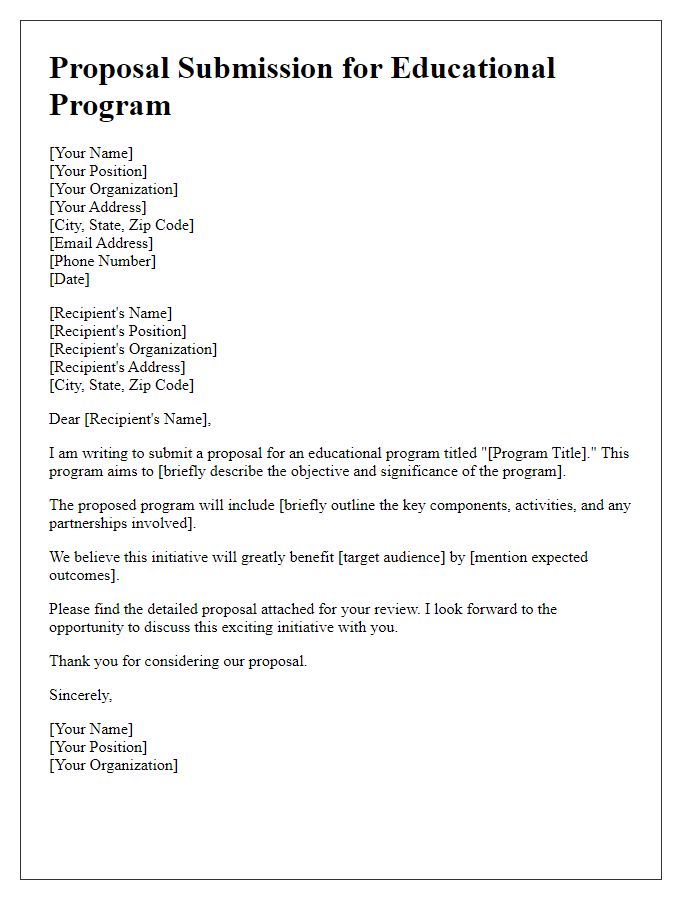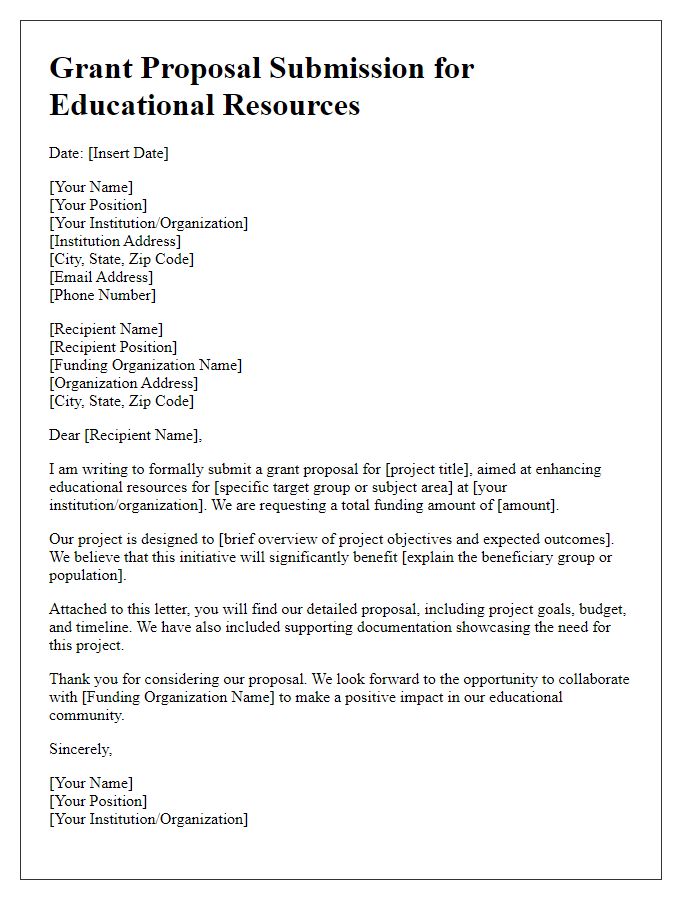Are you looking to make a lasting impact in the field of education? Writing a compelling proposal letter can be your first step toward securing the support you need for your innovative ideas. In this article, we'll guide you through crafting a persuasive letter that highlights your project's significance and aligns with educational goals. Ready to transform your vision into reality? Let's dive in!

Clear Proposal Objective
The education proposal aims to enhance student engagement and learning outcomes in underserved communities through a comprehensive after-school program. The initiative seeks to provide access to STEM (Science, Technology, Engineering, Mathematics) resources, including interactive workshops and tutoring sessions, designed for middle school students aged 11 to 14. Locations such as community centers in Baltimore, Maryland, will serve as primary hubs for these activities, facilitating participation from local families. The program targets an enrollment of 100 students in its inaugural year, with plans for expansion. Collaborations with educational institutions and local businesses will ensure sustainable funding and access to trained facilitators, fostering a supportive environment that prioritizes academic achievement and personal development.
Strong Executive Summary
A strong executive summary is a critical component of an education proposal, highlighting key aspects that capture the reader's attention. It should succinctly outline the purpose of the proposal, emphasizing the educational project's objectives, targeted outcomes, and potential impact on the learning community, such as improving student engagement, enhancing teacher resources, or increasing graduation rates. The summary must also provide a brief overview of the methodology, budget considerations (such as funding requirements), and the timeline for implementation, ensuring clarity and brevity to convey essential information comprehensively and compellingly. Engaging statistics or relevant case studies can further enrich the narrative, demonstrating the proposal's relevance and potential success within the educational landscape.
Research and Evidence-based Rationale
A research proposal for an education initiative requires a solid evidence-based rationale that highlights the significance of the project. The initiative focuses on improving literacy rates among elementary school students in underfunded urban areas, characterized by socioeconomic challenges. A study by the National Center for Education Statistics indicates that only 65% of fourth graders in these regions achieve proficiency in reading by grade four, significantly lower than the national average of 80%. Implementing targeted intervention programs, such as phonics-based instruction, has demonstrated effectiveness in similar settings, with longitudinal studies showing a 25% improvement in reading skills after one academic year. Collaborating with local schools, we aim to integrate community resources, such as mentorship programs and after-school tutoring, to enhance student engagement and support. The anticipated outcome includes not only improved literacy rates but also a strengthened community investment in educational success, ultimately reducing the achievement gap.
Detailed Implementation Plan
The Detailed Implementation Plan (DIP) outlines key strategies for executing educational initiatives effectively within the specified timeline. Each strategy focuses on enhancing student engagement in STEM (Science, Technology, Engineering, Mathematics) subjects, particularly in underfunded public schools in urban areas, such as New York City. The plan includes professional development workshops for teachers throughout 2024, emphasizing contemporary pedagogical techniques and technological integration. Budget allocations of $500,000 target resources for classroom materials and virtual learning tools, ensuring equitable access for all students. Additionally, partnerships with local organizations, like TechBridge, will facilitate hands-on projects that connect theoretical learning to real-world applications, slated for implementation in the Fall semester. Regular assessment intervals every quarter aim to measure progress and adapt strategies as necessary, ensuring alignment with the overarching goal of increasing STEM proficiency by 20% over the academic year.
Evaluation and Assessment Metrics
The evaluation and assessment metrics in educational proposals play a crucial role in determining the success of programs designed for student learning outcomes. These metrics, often aligned with established educational standards such as the Common Core State Standards, can include quantifiable indicators such as student performance on standardized tests, classroom engagement levels, and overall academic achievement rates. Qualitative assessments through observational studies and student feedback questionnaires can provide insight into areas needing improvement. Implementation timelines often span academic semesters, with periodic assessments scheduled at key intervals, like quarterly reviews, to track progress. Stakeholders, including educators, administrators, and parents, participate in the evaluation process to ensure a holistic approach to student development and program effectiveness.













Comments